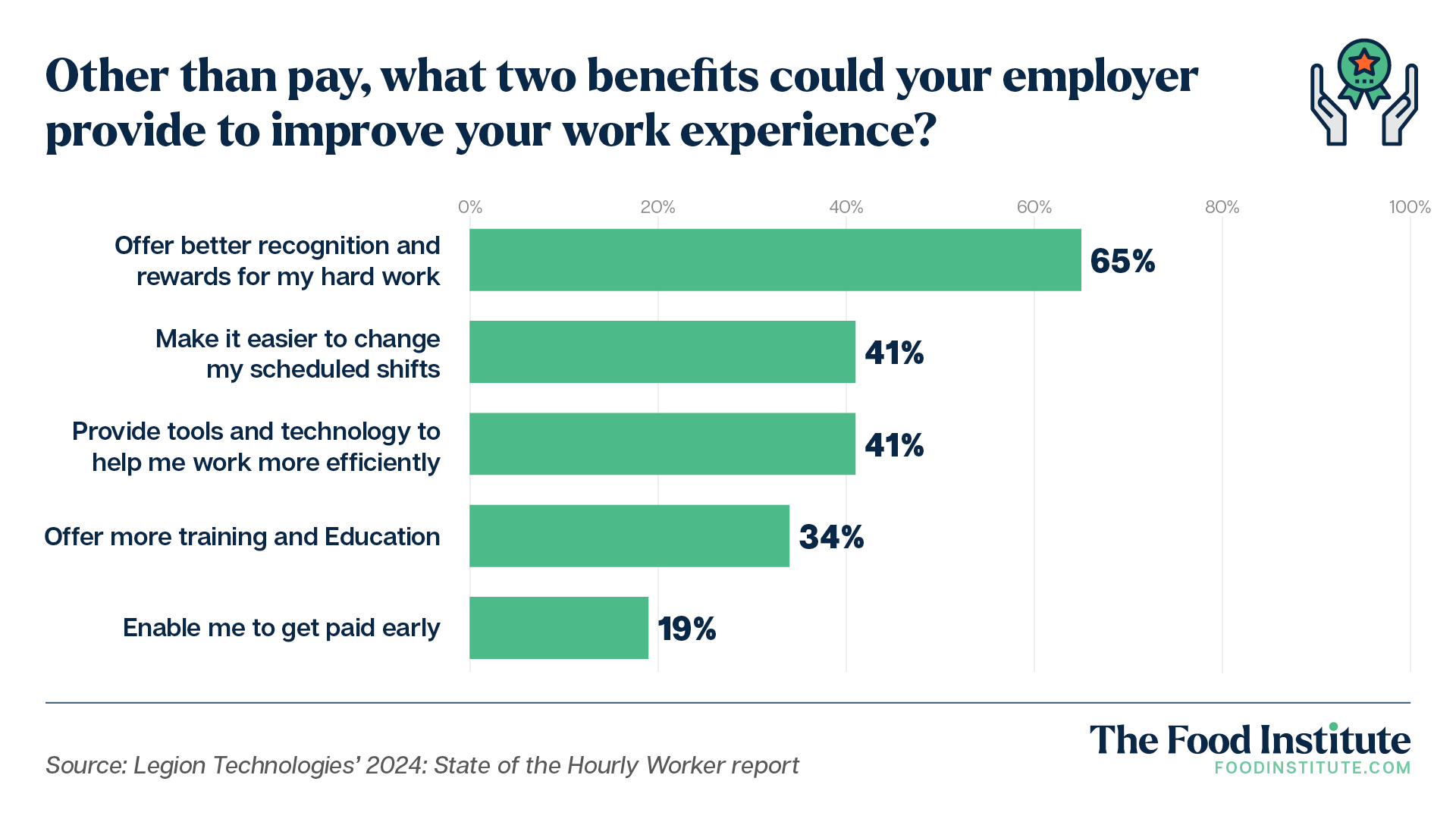A recently released report illustrated that a significant number of frontline workers in retail and hospitality feel unappreciated. According to findings revealed in Legion Technologies’ 2024 State of the Hourly Workforce report, half of the employees surveyed said they’re “very likely” to leave their jobs within the next year – and that number jumps to 76% among Gen Z workers.
The key takeaway from the study is that “employers urgently need to raise retention rates and boost morale among hourly workers and managers,” Legion noted.
The study – which surveyed over 1,500 North American workers and 500 managers – revealed that greater recognition represented workers’ top demand from employers. The connection appears to be clear: to attract and retain top talent, employers must invest in better recognition programs for their hourly employees, Legion wrote. Companies like Walmart, which just introduced bonuses for hourly employees, are already taking note of the trend.
“When reviewing the survey, a few eye-opening statistics stood out to me,” Michael Spataro – chief customer officer at Legion – told The Food Institute. “The first was that only 50% of hourly workers believe their employer cares about creating a good work experience for them – meaning there’s half the hourly workforce that isn’t convinced.
“This data suggests that companies may be struggling to communicate the work they’ve done to provide a better employee experience.”
The new study had multiple data points that illustrated workers’ unrest. For example, when asked to reflect on the past year, workers indicated the following:
Managing To Get By
The work experience for managers is problematic right now, too. Legion’s study found that managers are overwhelmed with rote administrative work and tasks like scheduling. Fewer than half (47%) of managers feel they have enough time to focus on the parts of their job that they enjoy, like team development.
Additionally, 56% of managers said they spend 3 to 10 or more hours per week on tasks related to scheduling.
Most managers (56%) said they’re hiring more retirees and minors this year, which has presented new challenges – namely, motivation, different communication styles, scheduling conflicts, and resistance to change.
Motivating today’s hourly employees starts with providing them recognition when warranted.
“Hourly workers are tired of working a ‘thankless’ job,” Spataro said.
“To make recognition and rewards more meaningful, companies need to look at ways to recognize their workers beyond their performance review score,” he added. Employers “have to recognize their workers as humans, accounting for and celebrating their unique contributions to their teams and the company as a whole. Their unique skills and values are just as worthy of recognition as their productivity and efficiency.”
The Food Institute Podcast’s “Foodservice Gamechangers” Series
Get to know the men and women behind the scenes of foodservice distribution in a new, limited series from The Food Institute Podcast called “Foodservice Gamechangers.” Recently, Pat Mulhern, advisor to The Food Institute, sat down for brief conversations with seven of the most influential foodservice merchandising and distribution leaders. Highlighting their food career journeys and management styles, the conversations feature insightful thoughts on what may lie ahead for manufacturers, distributors, and operators in foodservice.













